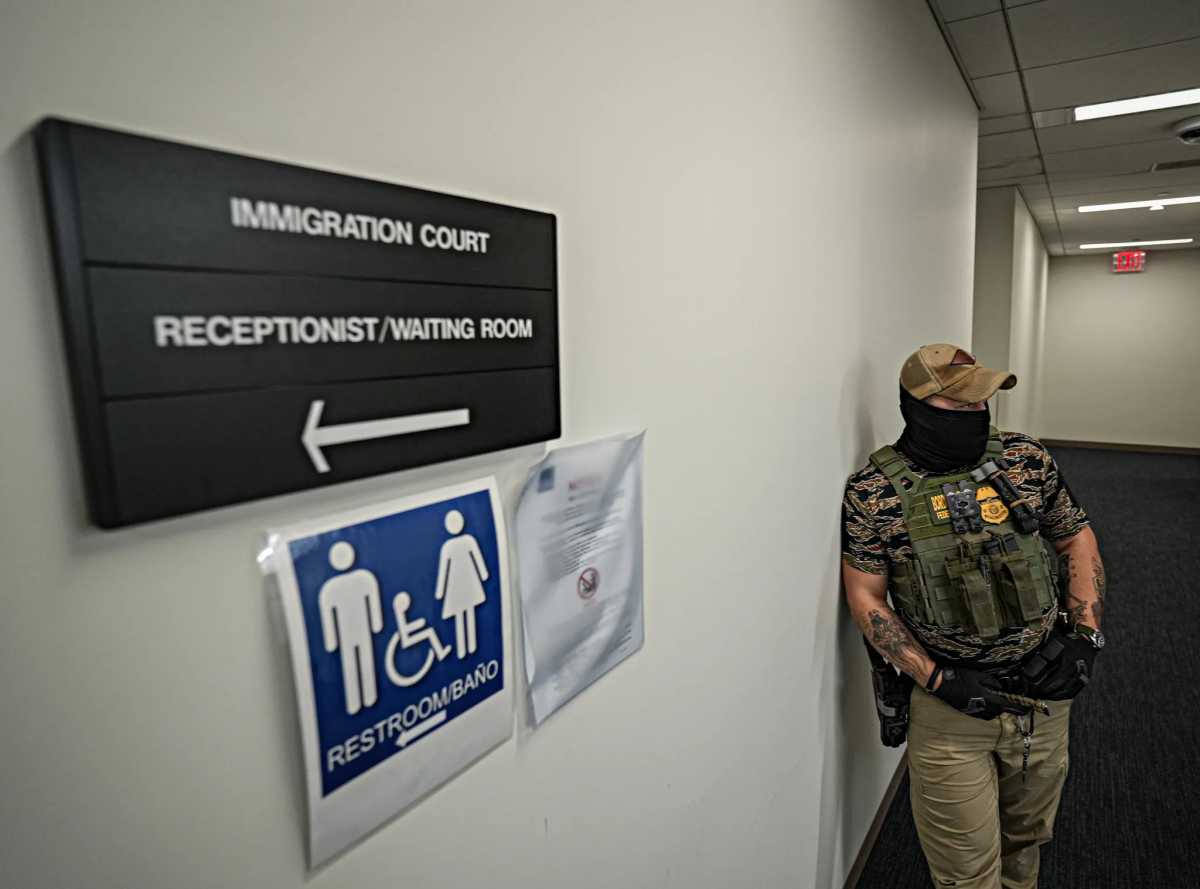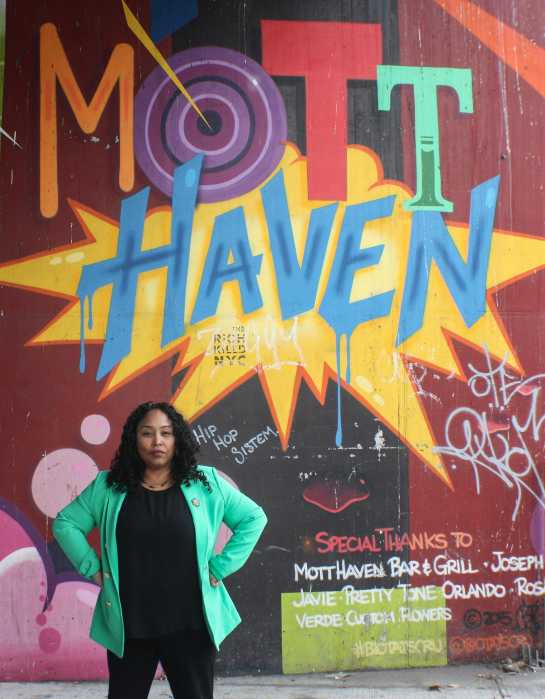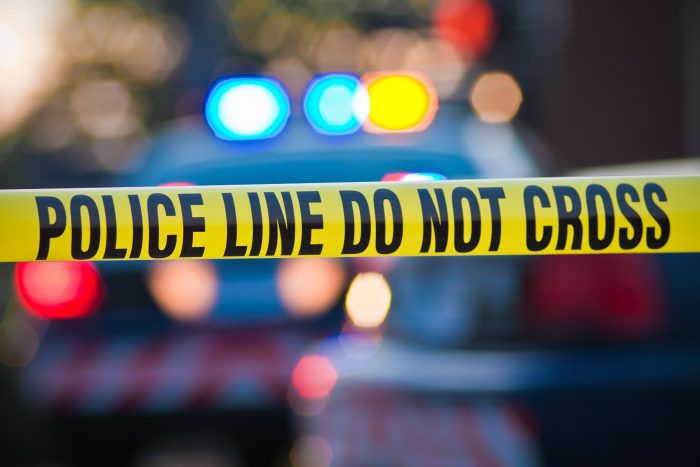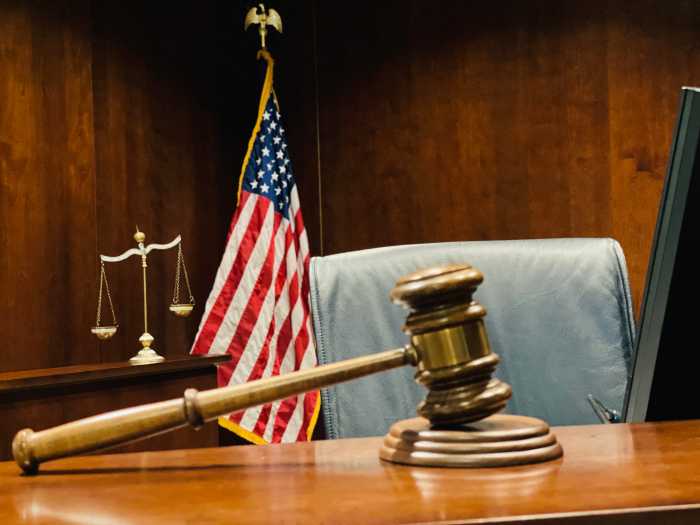BY Aline Reynolds
Part 3 in a series on the New York City Housing Authority
The New York City Housing Authority has neither the funds nor the personnel to implement all the security measures the residents want, such as monitored cameras and an enhanced Resident Watch program. Yet crime has risen by 2.8 percent in Lower Manhattan’s public housing developments over the past year.
N.Y.C.H.A.’s Safety and Security Task Force, created last year, is reviewing security and police issues to amend its services. The task force will soon release a report documenting N.Y.C.H.A.’s security problems and solutions. But under the current system, many public housing residents are afraid.
At 2:53 a.m. on September 1, armed men confronted Smith Houses resident Anthony Evans, 28, in the playground facing the 46 Madison Street residence. Evans was shot in the head, torso and right arm. He was taken to Downtown Hospital, where he was pronounced dead.
Surveillance cameras recorded the crime but were unable to produce a clear image of the perpetrator. Residents of the housing development argue the cameras are unreliable guards against crime.
“Nobody’s monitoring those cameras, so it doesn’t make me feel any better one way or the other if the cameras are here,” said Smith Houses resident Mary Daez.
“If they had somebody looking at those cameras, and [saw] there was a fight escalating, then maybe they could have said, ‘Listen, there’s a fight beginning at such and such a place, send a patrol car,’ and that could have been stopped,” said another resident, Mariainez Quinonez.
Cameras indeed prove more effective when they are manned, according to Deputy Inspector Thomas Hogan, who as the commander of Police Service Area 4 is responsible for the security of 25 N.Y.C.H.A. developments. A recent analysis conducted by the N.Y.P.D. revealed a dramatic drop in crime after cameras were installed.
But camera protection doesn’t come cheap. The technology is expensive, Hogan said, and “[paying] police officers to just sit there and watch would be cost-prohibitive.”
This explains why only 15 of N.Y.C.H.A.’s 334 developments, including Lillian Wald Houses on the Lower East Side, have cameras that are monitored 24 hours a day by the cops.
“Deciding which developments got them was based on crime and cost of installation,” said Hogan.
Other Lower East Side developments, such as Seward Park Extension, don’t have cameras at all. Tenant Association President Carmen Ortra, who has been fighting for cameras for the past year, was told in the spring that N.Y.C.H.A. doesn’t have the money to install them.
“If we have cameras in the building, even if they’re not watched every second of the day, at least if something happens, someone could go back and look at the tape and see what’s going on,” said 32-year-old resident Tamara Johnson.
N.Y.C.H.A. Board Member Margarita Lopez contended that cameras are only instrumental in identifying the perpetrators and do not necessarily prevent the crimes from taking place.
“N.Y.C.H.A. never had money for cameras… that is again another dream that doesn’t have funding attached to it,” said Lopez.
Local elected officials such as New York State Assemblyman Sheldon Silver and Councilmember Margaret Chin secured funding for the cameras in the 12 Lower Manhattan developments.
“I hope very much they’re going to do it for us,” Ortra said, since few residents volunteer to monitor the lobbies. She is planning to bring up the subject in a meeting with Chin this week.
“We’ll look at how many entrances [the development] has, how many cameras it needs, and figure out if we can get it into budget this year,” said Chin’s spokesperson Jake Itzkowitz. So far this year, Chin has secured $800,000 for cameras for Rutgers Houses, Vladick and LaGuardia Houses, which are supposed to be installed between now and June 30, 2011.
“The priority for [the Councilmember] is that residents in her district are safe,” Itzkowitz said. “Right now, cameras are the best way to do that.”
Resident Watch
Around 20 older women and men sat in the small, stark lobby of 45 Pike Street in Rutgers Houses on a recent Friday evening. They were chatting and reading newspapers, without weapons or other protective gear.
But guards they were. Like others who serve on Resident Watch in N.Y.C.H.A. developments, most of them were there to fulfill federal community service requirements. Under law, all N.Y.C.H.A. residents have to perform a minimum of eight hours of community service per month as a term of their lease, such as Resident Watch.
The Tenant Patrol program, founded in 1968, was renamed Resident Watch this summer.
“While residents have volunteered for more than 40 years to enhance the safety and security of their communities, Resident Watch is a response to residents’ requests to improve collaboration among them, N.Y.C.H.A. and the N.Y.P.D., and to figure out how best to reduce crime in public housing,” said N.Y.C.H.A. spokesperson Eric Deutsch.
Smith Houses senior Rosa Ramerez, who patrols her building, said she hasn’t witnessed any major crimes during the time she has served. Criminals avoid the building because “they know we’re here,” she said.
A N.Y.P.D. officer who requested anonymity confirmed that residents sitting in groups in the lobby deter crime.
“If the residents send the message that they care about their building, someone who appears they don’t belong in the building will say, ‘Hey, these people are watching,’” the officer said.
Rutgers Houses Resident Watch chief Lourdes Leung argued that numbers make a big difference.
“We have a big group here, so usually nothing happens,” Leung said.
Daez, who serves as the Smith Houses Resident Watch chief, organized a recognition dinner on November 13 at Saint James Church to encourage the 100 volunteers that partake in the program.
“We’re working now in conjunction with the borough [president’s] office and the politicians to try to get an [additional] stipend for the residents here, to show appreciation and hopefully get others involved,” said Daez.
Like the cameras, N.Y.C.H.A. does not have the funds to cover such expenses.
“It [would be] asking us one more time to get money out of a tree that doesn’t give you blood,” said Lopez.
She emphasized the importance of residents participating in the program, whether they get paid or not. The more that residents monitor their own developments, the less likely crimes are to occur.
“Preserving safety and security is the responsibility of N.Y.C.H.A. tenants, not just the police,” said Lopez.
But Michael Steele, president of the Tenant Association at Rutgers Houses, points out that guarding buildings is potentially dangerous, and additional stipends are unlikely to attract many newcomers.
“Nobody wants to put their life on the line, and that’s basically what you’re doing,” said Steele.
And some tenants of the three developments said they don’t feel any safer with residents on patrol.
“They’re little old ladies,” Johnson said. “If you’re at gunpoint, what’re you going to do? Sit there and try to call the cops?”
“You going to run and save somebody? No,” said Stephanie Ortiz, a former Resident Watch volunteer at Smith Houses.
The program, Ortiz added, typically ends at 9 p.m., when the residents return to their homes and when most of the crimes occur.
The tenant patrol volunteers at Rutgers Houses were shaken by a May 30 incident, when one resident stabbed another with a kitchen knife. The incident happened after the volunteers had finished their shift.
“It was scary,” said resident Nancy Moo, who lives on the first floor. “The next day, a detective came and knocked on the door… I was like, ‘Oh my God, I went upstairs [the night before] and didn’t see anything or hear anything.’”
Vertical Patrols
In 1995, N.Y.C.H.A. entered into a mutual agreement with the city to allocate an annual sum, currently $73 million, to provide above-baseline police services for its tenants.
“This means that N.Y.C.H.A. is entitled to receive an enriched level of police services compared to other landlords in the city,” explained Sheila Steinback, a communications officer for N.Y.C.H.A.
Beginning at the ground floor, officers work their way up the stairwells of N.Y.C.H.A. buildings, interrogating any loiterers they encounter along the way. Since only 72 officers are available to patrol the approximately 170 buildings in Lower Manhattan, the cops have to focus their efforts on developments where recent crimes have transpired.
“We’re taught to ask [loiterers] three questions: ‘Do you live in the building?’ ‘Are you visiting someone in the building?’ ‘Do you have any legitimate business in the building?’” the police officer said. If the person refuses to answer the questions, he or she could be arrested for trespassing.
But residents and advocates claim the cops are intimidating and harassing residents rather than protecting them. “[Tenants] don’t feel they’re receiving the special police services they pay for,” said Marquis Jenkins, a community organizer at Go Lower East Side, a Downtown housing and preservation organization that advocates for tenants’ rights. “They’re more afraid of police services than they are of the drug dealers.”
Ismael Sidibe, 23, who has lived in Seward Park Extension for seven years, was recently detained at his building’s police offices for trespassing.
“I told them I live upstairs,” said Sidibe said. “They said they didn’t care about where I live, they just took me to the precinct.”
Twenty-year-old Ralph DelaCruz was also arrested in his own building.
“I was just waiting for a friend, and it was considered loitering,” said DelaCruz. “They told me to stand up and asked for my I.D. I didn’t have it because I live in the building.”
The police source maintained that loiterers aren’t legally required to show identification, and that the officers are only trying to do their jobs.
“The reality is, there are a lot of bad guys out there,” the source said. “There are some people that just don’t like the police.”
Rose Bergen, District Chair of Lower Manhattan’s Citywide Council of Presidents (a N.Y.C.H.A. resident group) who sits on N.Y.C.H.A.’s safety and security task force committee, successfully pushed for modifications to the N.Y.P.D. patrol guide.
However, the manual will undergo no substantive changes, according to the police source. “People need to just be refreshed on their mission.”
Community Policing
In 1990, New York Mayor David Dinkins established a community-policing program, in which police officers were assigned to specific developments, enabling them to form a close rapport with the residents. His successor, Rudy Giuliani, did away with the program in 1995, when N.Y.C.H.A.’s police services merged with the N.Y.P.D.’s in an effort to combat hard crime.
Some of N.Y.C.H.A.’s residents long for a return to the kind of community policing Dinkins instituted. Rutgers Houses resident Dorothea Cody said under the Dinkins program the police “knew who everyone was.”
“It was a completely different kind of feeling,” said Judith Goldiner, an attorney at the Legal Aid Society who represents N.Y.C.H.A. residents in court. “They knew who the good kids were and who the bad kids were. But they moved away from that, and I think that’s what’s causing a lot of the problems we’re seeing.”
Jenkins recalled the cozy ties he and his family had with the police officers when he was a kid living in Bracetti Plaza, an East Village N.Y.C.H.A. development, in the 1990s.
Those bonds between tenants and police officers no longer exist, according to Jenkins and others.
Victor Bach, a housing policy analyst for the Community Service Society, said, “I think a lot of work needs to be done to build effective community policing that satisfies both residents’ concerns about safety and at the same time treats them respectfully and well without causing innocent residents’ harm.”
Strides are being made to alleviate the problem. At the September 30 Smith Houses Tenant Association meeting, State Senator Daniel Squadron asserted that, though the N.Y.P.D. can’t revert back to community policing, those tight relationships can be reestablished.
N.Y.P.D. Lieutenant Steve Nusser offered his cell phone number to the residents in attendance at the T.A. meeting. “We have to work together,” Nusser said to the residents.
He continued, “We need as much information as possible from you. You’re the people that live here… everything people tell us, we appreciate it and we’re going to act on it. If we don’t get that information, it makes our job a lot harder.”



























